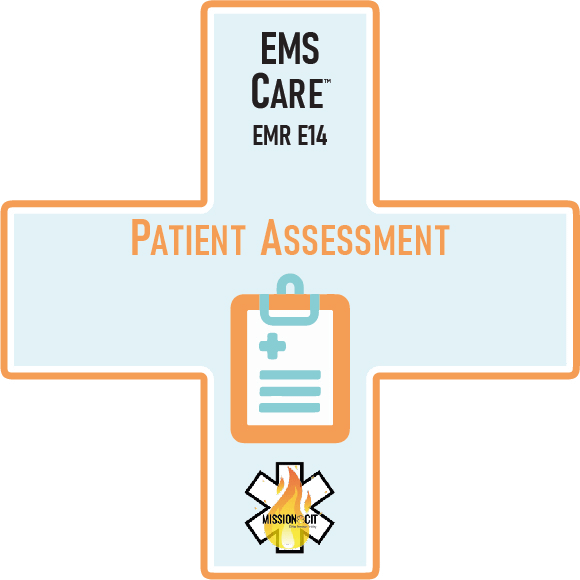About Course
EMS Care EMR Chapter E14| Patient Assessment starts with the introduction followed by detailed discussions on how an EMR should evaluate a patient. Step by Step procedures are described, so that an EMR is able to make an informed decision rather than going by appearances.. The lessons covered are
- Step 1- Scene size-up;
- Step 2-Primary assessment;
- Step 3- History taking;
- Step 4-Secondary assessment; and
- Step 5-Reassessment
To get credit for this course, you must watch all the lessons in their entirety, the course review, and pass the quiz at the end with a score of 75% or better.
An Excerpt from the course on Patient Assessment
Painful stimulus applies pain to the patient to determine if and how he responds. Painful stimuli can be applied either centrally or peripherally. A central painful stimulus is applied to the core of the body.
The following are methods of applying central painful stimuli:
- Trapezius pinch: Pinch the trapezius muscle that extends from the neck’s base to the shoulder.
- Supraorbital pressure: Sliding finger under the upper ridge of the eye socket and applying upward pressure. Care must be taken not to damage the eyelid or globe during this procedure.
- Sternal rub: Hard downward pressure to the center of the sternum with the knuckles of the hand.
- Earlobe pinch: Pinch the soft tissue portion of the earlobe. And,
- Armpit pinch: Pinch the skin and underlying tissue along the margin of the armpit.
The following are methods of applying peripheral painful stimuli.
- Nail bed pressure. Apply point pressure to the cuticle portion of the nail bed.
- Pinch the web between thumb and index finger. Or,
- Pinch the finger, toe, hand, or foot

